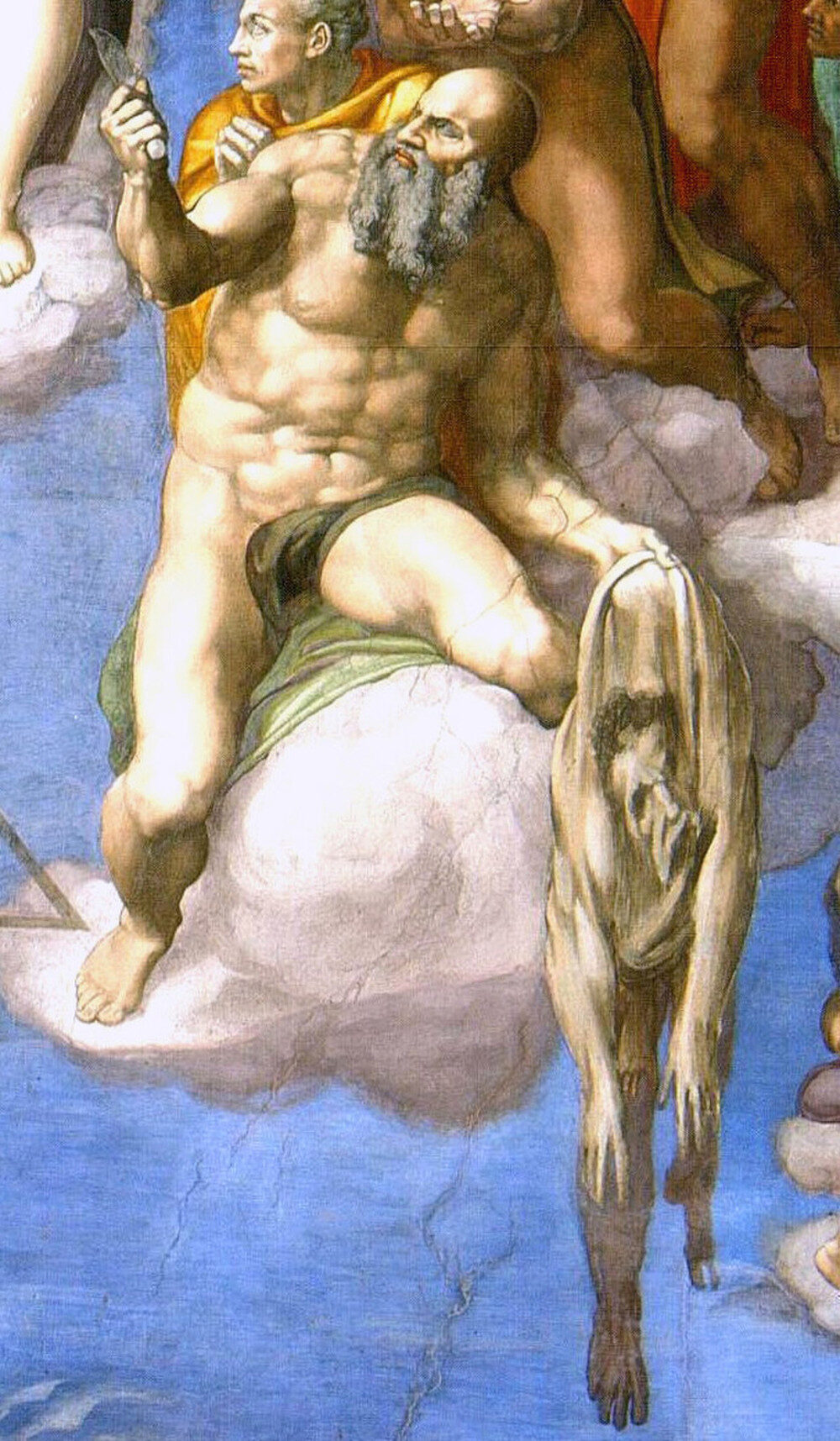
A dead animal can be flayed when preparing the meat as food - or to obtain its hide, or fur. This is more commonly known as skinning rather than flaying. At this point we may note that flaying of humans became a form of torture and torment - which is why it was applied to St Bartholomew. Flaying alive was an especially horrible form of punishment. It seems this is a practice going back a long way - deep into the depths of time. For example, we know from Iron Age Assyrian records that prisoners were on occasion flayed alive - usually resulting in their death via hypothermia, as an example. It is commemorated in royal edicts, and engraved inscriptions.
How long the practice had taken place before the Iron Age is an unknown factor. Asurnasirapli II brags of flaying rebellious kings and officials. In Chinese history flaying was also common - of servants, officials, and rebels. The Ming dynasty was associated with flaying, at its inception and its passing. It therefore led to the ascendancy of the Ming - and also contributed to their downfall, via the mandate of heaven. One wonders what kind of flaying is implied in this tradition - perpetrated by humans, or by the gods. Or even with an origin in the heavens. Flaying was an occasional punishment in Europe, among the Vikings - and therefore inherited by the Normans. Hence, Edward I had three rebels flayed, and their skins were attached to three doors of Westminster Abbey, as a warning. They had been accused of robbing the treasury.
In Mexico, the Aztec god Xipe Topac is associated with flaying - a specific trait of the god. As such, to placate the god, enemy soldiers were flayed as a sacrifice to the god. Catholics and Orthodox Christians claim St Bartholomew was martyred by first a flaying of his skin, followed by crucifixion. The Wiki then goes on to catalogue a long list of flayed people - usually for resisting a foreign yoke. The Persians seemed to use it a lot as a punishment - or their record of it has survived whereas the practice may not have been so recorded in other cultures.
I can remember reading an account of the Zulu war in southern Africa where it is not humans that were flayed alive, but bulls. This was specifically a ritual that took place prior to a major offensive. As the bull was skinned it bellowed in pain and that was all part of the religio-mythic magic. The bull was subsequently divided up into strips of meat and passed to each combatant - in order to take on the strength of the bull in the upcoming battle.
Where on earth did the idea of flaying people come from? It may originate in hunting and preparation of meat for consumption - but why transfer that across to humans, and why was it perceived as a special punishment, associated with deities of one kind or another. The bull god for example. Or the constellation of Taurus [the bull in the sky]. During airbursts from exploding meteors, at relatively low points in the atmosphere, the blast from such an explosion involved great heat.
The release of energy was enough to burn clothing and flay people alive - varying degrees of skin removal. Hence, in the aftermath of airburst events the gods were mollified by providing them with human sacrifices - or animal sacrifices. The origin of this would have been lost with the rise of written religions such as Judaism, Christianity, and Islam. However, the idea persisted as a form of punishment, which is what the Wiki article is mostly about. The religio-mythic origins lay deep in the past - and can still be traced, even in the Biblical text.



[Link]